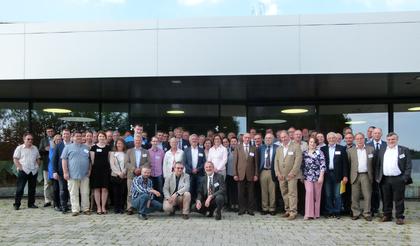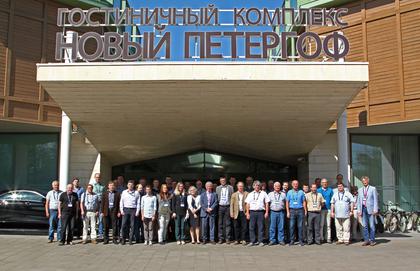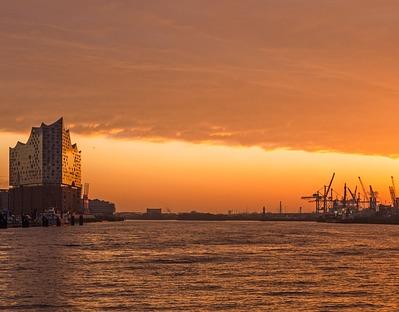Press trip to Russian Large-scale Research Infrastructures
08 November, 2017
Science Journalists from six European countries visit major sites in Moscow, Dubna and Gatchina
European science journalists visiting NICA construction site at JINR, Dubna. Picture: Alexandra Schmidli, ESS
The best way for a good story is being on-site: A group of six science journalists from all over Europe has taken the unique opportunity to visit major Russian sites for large-scale research infrastructures in Moscow, Dubna and Gatchina. With a high expertise in natural sciences, especially physics, they gathered insite-views in several multimillion projects, interviewed leading officials and young, highly motivated scientists. On 9-12 October 2017, in parallel to the 10th Meeting of the Group of Senior Officials on Global Research Infrastructures (GSO) they got important background information about an intended future European-Russian research partnership which lies in the focus of the European Horizon 2020 project CREMLIN.
„El Pais“ in Spain, „Der Standard“ in Austria, „La Recherche“ in France: Major European media sent their science reporters to tell their readers about future basic and applied science, possibly carried out by European researchers at Russian sites. From Germany, Belgium and The Netherlands colleagues from more specialized, highly reputed media (MIT Technology Review, Sciencedaily.be, De Ingenieur) completed the group of journalists. With high attention all of them followed the tight schedule, in the first line prepared by representatives from the CREMLIN-partners NRC “Kurchatov Institute”, European Spallation Source (ESS) in Lund and DESY in Hamburg.
Beginning with a strategical overview, presented by officials during the GSO-meeting at the Ministry of Education and Science of the Russian Federation, the scientific part started at the NRC “Kurchatov Institute” in Moscow. Russian scientists presented their renowned institute with a comprehensive program ranging from historical highlights to current experiments with high international impact.
The search for new, heavy elements of the periodic table and further research on hadrons and nuclei have taken centre stage at the NICA ion collider facility in Dubna. Even the challenging point to ease the access to this instrument for many European scientists was subject of discussions between the European journalists and Russian representatives of the Joint Institute for Nuclear Research (JINR). Future research projects made possible with neutron beams from the high flux neutron source (PIK) drew much attention at the Petersburg Nuclear Physics Institute named after B.P. Konstantinov in Gatchina. Since PIK´s operation is expected to start soon at the end of 2018, the scientific utilisation of this facility could be the first benchmark for a significant increase of joined European-Russian experiments in materials research, soft matter or life science.
During the press trip all science reporters had the chance to be updated in basic and applied science made possible by large-scale research facilities. They obtained a personal, visual and profound impression to present their audiences the opportunities and challenges of research in a joint Russian-European future even in politically tough times.




